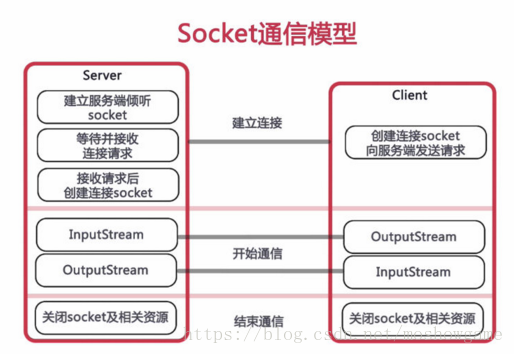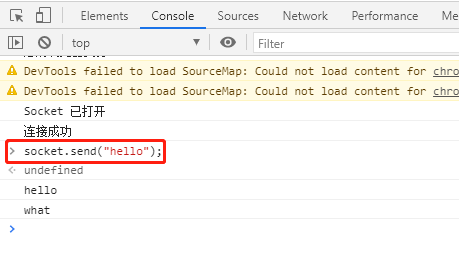前言
传统的前后端数据交互,都是前端发送请求,后端返回数据,主动权在前端。但是如果想向客户端推送数据,在原来的协议上来说,是不可能的。只能前端不断使用Ajax去请求后端,拉去数据。这种做法会很耗费客户端与服务器的资源。还有就是WebSocket技术,WebSocket协议是基于TCP的一种新的网络协议。它实现了浏览器与服务器全双工(full-duplex)通信——允许服务器主动发送信息给客户端。

要使用websocket关键是@ServerEndpoint这个注解,该注解是javaee标准中的注解,Tomcat7及以上已经实现,如果使用传统方法将war包部署到tomcat中,只需要引入javaee标准依赖即可:
<dependency> <groupId>javax</groupId> <artifactId>javaee-api</artifactId> <version>7.0</version> <scope>provided</scope> </dependency>
如果使用SpringBoot,则直接引入SpringBoot的依赖即可:
<dependency>
<groupId>org.springframework.boot</groupId>
<artifactId>spring-boot-starter-websocket</artifactId>
</dependency>
实现过程
项目结构

pom.xml
<?xml version="1.0" encoding="UTF-8"?> <project xmlns="http://maven.apache.org/POM/4.0.0" xmlns:xsi="http://www.w3.org/2001/XMLSchema-instance" xsi:schemaLocation="http://maven.apache.org/POM/4.0.0 https://maven.apache.org/xsd/maven-4.0.0.xsd"> <modelVersion>4.0.0</modelVersion> <parent> <groupId>org.springframework.boot</groupId> <artifactId>spring-boot-starter-parent</artifactId> <version>2.4.2</version> <relativePath/> <!-- lookup parent from repository --> </parent> <groupId>com.websocket</groupId> <artifactId>demo</artifactId> <version>0.0.1-SNAPSHOT</version> <name>demo</name> <description>Demo project for Spring Boot</description> <properties> <java.version>1.8</java.version> </properties> <dependencies> <dependency> <groupId>org.springframework.boot</groupId> <artifactId>spring-boot-starter-web</artifactId> </dependency> <dependency> <groupId>org.springframework.boot</groupId> <artifactId>spring-boot-starter-thymeleaf</artifactId> </dependency> <dependency> <groupId>org.springframework.boot</groupId> <artifactId>spring-boot-starter-websocket</artifactId> </dependency> <dependency> <groupId>org.springframework.boot</groupId> <artifactId>spring-boot-starter-test</artifactId> <scope>test</scope> </dependency> <!-- 设置为热部署 --> <dependency> <groupId>org.springframework.boot</groupId> <artifactId>spring-boot-devtools</artifactId> <optional>true</optional> </dependency> </dependencies> <build> <plugins> <plugin> <groupId>org.springframework.boot</groupId> <artifactId>spring-boot-maven-plugin</artifactId> </plugin> </plugins> </build> </project>
application.properties
server.port=8080 server.servlet.context-path=/demo server.servlet.session.timeout=1800 spring.thymeleaf.cache=false spring.thymeleaf.encoding=utf-8 spring.thymeleaf.mode=HTML5 spring.thymeleaf.prefix=classpath:/templates/ spring.thymeleaf.suffix=.html
WebSocketConfig.java
package com.websocket.demo.config; import org.springframework.context.annotation.Bean; import org.springframework.context.annotation.Configuration; import org.springframework.web.socket.server.standard.ServerEndpointExporter; @Configuration public class WebSocketConfig { @Bean public ServerEndpointExporter serverEndpointExporter() { return new ServerEndpointExporter(); } }
WebSocketServer.java
package com.websocket.demo.config; import org.slf4j.Logger; import org.slf4j.LoggerFactory; import org.springframework.stereotype.Component; import javax.websocket.*; import javax.websocket.server.PathParam; import javax.websocket.server.ServerEndpoint; import java.io.IOException; import java.util.concurrent.CopyOnWriteArraySet; @ServerEndpoint("/websocket/{sid}") @Component public class WebSocketServer { private static Logger logger = LoggerFactory.getLogger(WebSocketServer.class); //静态变量,用来记录当前在线连接数。应该把它设计成线程安全的。 private static int onlineCount = 0; //concurrent包的线程安全Set,用来存放每个客户端对应的MyWebSocket对象。 private static CopyOnWriteArraySet<WebSocketServer> webSocketSet = new CopyOnWriteArraySet<WebSocketServer>(); //与某个客户端的连接会话,需要通过它来给客户端发送数据 private Session session; //接收sid private String sid=""; /** * 连接建立成功调用的方法*/ @OnOpen public void onOpen(Session session, @PathParam("sid") String sid) { this.session = session; webSocketSet.add(this); //加入set中 addOnlineCount(); //在线数加1 logger.info("有新窗口开始监听:"+sid+",当前在线人数为" + getOnlineCount()); this.sid=sid; try { sendMessage("连接成功"); } catch (IOException e) { logger.error("websocket IO异常"); } } /** * 连接关闭调用的方法 */ @OnClose public void onClose() { webSocketSet.remove(this); //从set中删除 subOnlineCount(); //在线数减1 logger.info("有一连接关闭!当前在线人数为" + getOnlineCount()); } /** * 收到客户端消息后调用的方法 * * @param message 客户端发送过来的消息*/ @OnMessage public void onMessage(String message, Session session) { logger.info("收到来自窗口"+sid+"的信息:"+message); //群发消息 for (WebSocketServer item : webSocketSet) { try { item.sendMessage(message); } catch (IOException e) { e.printStackTrace(); } } } /** * * @param session * @param error */ @OnError public void onError(Session session, Throwable error) { logger.error("发生错误"); error.printStackTrace(); } /** * 实现服务器主动推送 */ public void sendMessage(String message) throws IOException { this.session.getBasicRemote().sendText(message); } /** * 群发自定义消息 * */ public static void sendInfo(String message,@PathParam("sid") String sid) throws IOException { logger.info("推送消息到窗口" + sid + ",推送内容:" + message); for (WebSocketServer item : webSocketSet) { try { //这里可以设定只推送给这个sid的,为null则全部推送 if(sid==null) { item.sendMessage(message); }else if(item.sid.equals(sid)){ item.sendMessage(message); } } catch (IOException e) { continue; } } } public static synchronized int getOnlineCount() { return onlineCount; } public static synchronized void addOnlineCount() { WebSocketServer.onlineCount++; } public static synchronized void subOnlineCount() { WebSocketServer.onlineCount--; } }
SendMessageController.java
package com.websocket.demo.controller; import com.websocket.demo.config.WebSocketServer; import org.slf4j.Logger; import org.slf4j.LoggerFactory; import org.springframework.stereotype.Controller; import org.springframework.web.bind.annotation.GetMapping; import org.springframework.web.bind.annotation.PathVariable; import org.springframework.web.bind.annotation.RequestMapping; import org.springframework.web.bind.annotation.ResponseBody; import org.springframework.web.servlet.ModelAndView; import java.io.IOException; @Controller @RequestMapping("/sendMessage") public class SendMessageController { private Logger logger = LoggerFactory.getLogger(SendMessageController.class); //页面请求 @GetMapping("/socket/{cid}") public ModelAndView socket(@PathVariable String cid) { ModelAndView mav=new ModelAndView("socket"); mav.addObject("cid", cid); return mav; } //推送数据接口 @ResponseBody @RequestMapping("/socket/push/{cid}") public String pushToWeb(@PathVariable String cid, String message) { try { WebSocketServer.sendInfo(message,cid); } catch (IOException e) { e.printStackTrace(); return "ERROR " + cid + " : send message is error"; } return "SUCCESS " + cid + " : send message is success"; } }
socket.html
<script> var socket; if(typeof(WebSocket) == "undefined") { console.log("您的浏览器不支持WebSocket"); } else { console.log("您的浏览器支持WebSocket"); //实现化WebSocket对象,指定要连接的服务器地址与端口 建立连接 //等同于socket = new WebSocket("ws://localhost:8083/checkcentersys/websocket/20"); socket = new WebSocket("http://localhost:8080/demo/websocket/20".replace("http","ws")); //打开事件 socket.onopen = function() { console.log("Socket 已打开"); socket.send("这是来自客户端的消息" + location.href + new Date()); }; //获得消息事件 socket.onmessage = function(msg) { console.log(msg.data); //发现消息进入 开始处理前端触发逻辑 }; //关闭事件 socket.onclose = function() { console.log("Socket已关闭"); }; //发生了错误事件 socket.onerror = function() { alert("Socket发生了错误"); //此时可以尝试刷新页面 } //离开页面时,关闭socket //jquery1.8中已经被废弃,3.0中已经移除 // $(window).unload(function(){ // socket.close(); //}); } </script>
上述是代码的全部
调用过程
前端向后端发送数据
通过js调用socket.send(String);即可向后台发送需要的数据,如果涉及到js对象,可以转变为json字符串发送

后端向前端发送数据
可以通过调用写好的controller接口向前端发送数据

也可以直接调用WebSocketServer.sendInfo(message,cid);静态方法发送数据
WebSocketServer.sendInfo(message,cid);
理解WebSocket心跳及重连机制
在使用websocket的过程中,有时候会遇到网络断开的情况,但是在网络断开的时候服务器端并没有触发onclose的事件。这样会有:服务器会继续向客户端发送多余的链接,并且这些数据还会丢失。所以就需要一种机制来检测客户端和服务端是否处于正常的链接状态。因此就有了websocket的心跳了。还有心跳,说明还活着,没有心跳说明已经挂掉了。
- 为什么叫心跳包呢?
- 它就像心跳一样每隔固定的时间发一次,来告诉服务器,我还活着。
- 心跳机制是?
- 心跳机制是每隔一段时间会向服务器发送一个数据包,告诉服务器自己还活着,同时客户端会确认服务器端是否还活着,如果还活着的话,就会回传一个数据包给客户端来确定服务器端也还活着,否则的话,有可能是网络断开连接了。需要重连~
Reference:
http://www.webkf.net/article/32/95425.html
http://www.manongjc.com/detail/8-rsdxxtmudepkqfx.html
http://www.demodashi.com/demo/16060.html